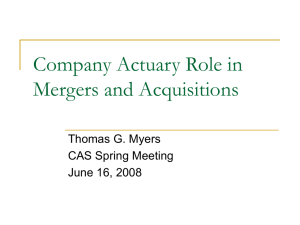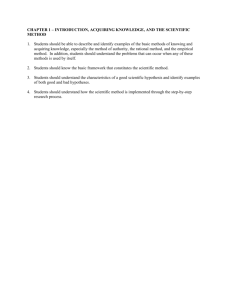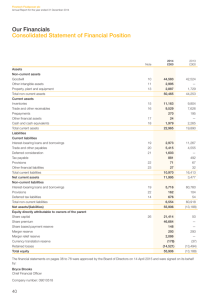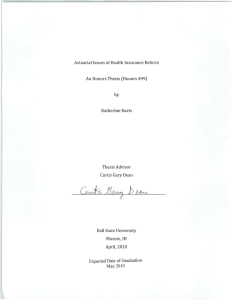Company Actuary Role in Mergers and Acquisitions
advertisement
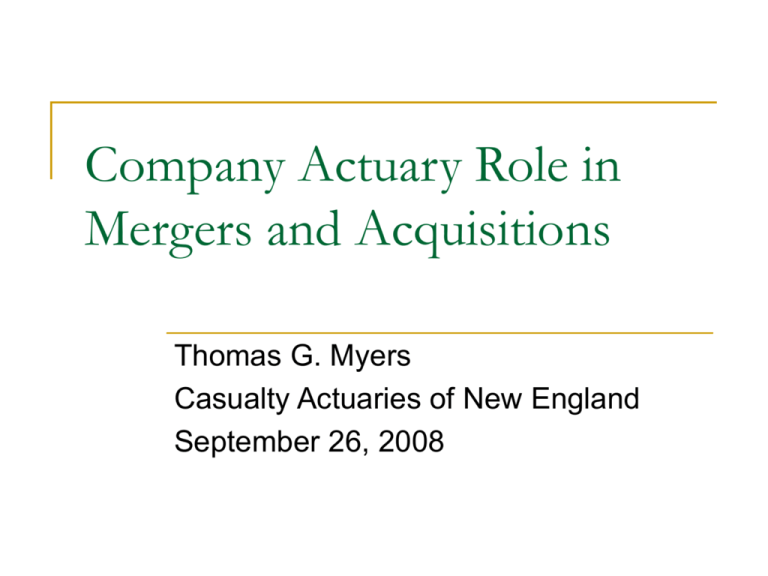
Company Actuary Role in Mergers and Acquisitions Thomas G. Myers Casualty Actuaries of New England September 26, 2008 Four primary types of transactions: Loss portfolio (reserve) transfer - Risk-adjusted present value of loss runoff. - Not purchasing existing assets and liabilities. Purchase of runoff company (no new business) - Value of assets/liabilities (including reserves) plus profit/loss on declining volume of future premiums. Purchase of active company - Value of assets/liabilities (including reserves) plus profit/loss on future premiums (could be increasing or declining depending on business assumptions). Purchase of renewal rights - Profit/loss on future premiums only. - Not purchasing existing assets and liabilities. Traditional Actuarial Issues Loss reserve adequacy - Have there been changes in claim practices? - Will acquiring company be able to generate reduced severities? Pricing adequacy - At selling company’s rates - At acquiring company’s rates - Trends in business profile/underwriting quality Persistency - Historic - Future based on business model - Temporary impact of transition Traditional Actuarial Issues Risk Management - Will acquisition increase or decrease risk profile? - Impact on reinsurance or other risk mitigation strategies/costs. Product Strategy - Retain selling company’s products vs. converting to acquiring company’s products - What are the relative strategic benefits? - Cost of maintaining multiple products vs. conversion impact Other Ways to Add Value Financial Modeling - Future projected cash flows - Scenario testing - Dynamic Financial Analysis-type modeling Valuing Other Deal Aspects - Assets/Investment Income - Future Expense Assumptions - Growth Assumptions - Other Strategic Implications of Deal Other Acquiring Company Issues Imperfect Information - Need to understand the data as well as you can - Likely not to get all the data you want - How to make assumptions in the absence of data Tight Timeframes - Need to prioritize issues s Selling Company Issues How to fairly present the financial/strategic value of the company Construct “data room” - Loss Reserve Triangles - Pricing Studies - Historic loss/persistency results - Risk studies (e.g., PML models) - Rate and underwriting manuals - Significant events that would impact historic results
